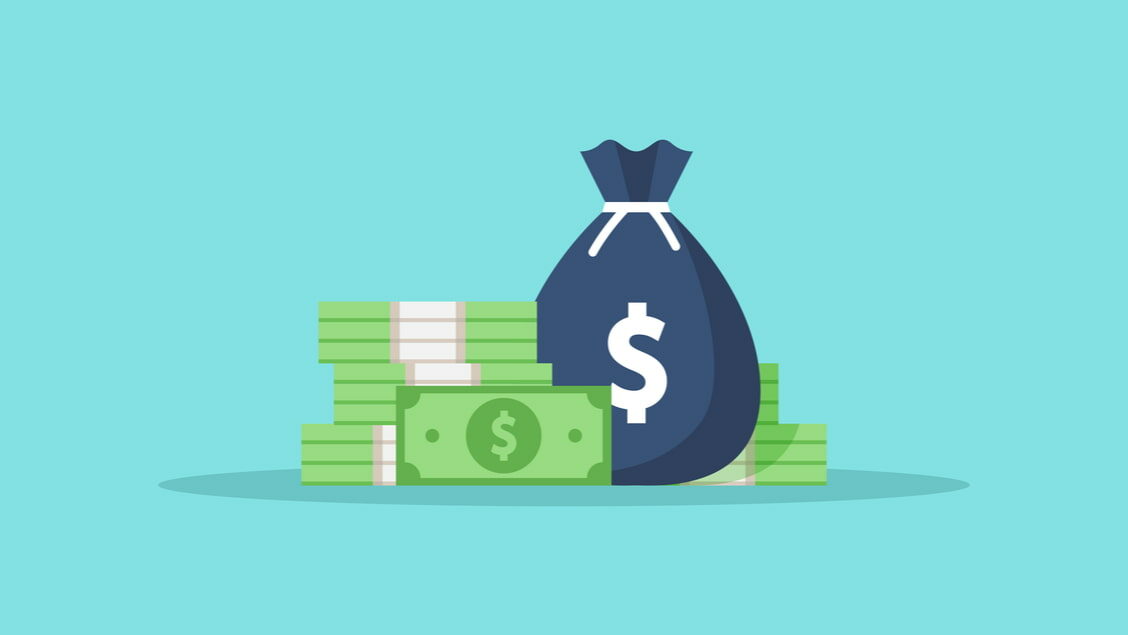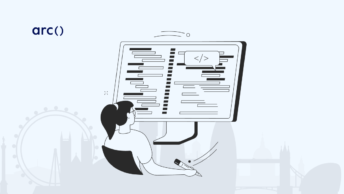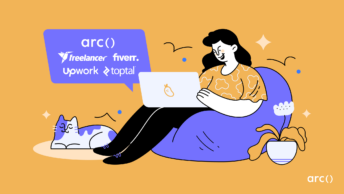Regardless of if you’re a junior or senior developer, when you’re ready to start with your first freelance developer gig, you might be thinking, “How do I convert my annual salary to an hourly rate?”
Instead of using fancy calculators that provide you with your salary to an hourly rate, or even generic converters, we’ll walk you through a bullet-proof approach on how to set your hourly rate as a freelance developer. These tips will apply no matter if you’re being paid a fixed rate, an hourly rate, or a retainer.
Here are the three main factors to consider when setting your freelancer hourly rate that we will cover:
- What type of freelance projects do you want to attract?
- What is your technical skillset and proficiency level as a developer?
- What should your take-home pay be after taxes?
Looking to hire the best remote developers? Arc can help you:
⚡️ Get instant candidate matches without searching
⚡️ Identify top applicants from our network of 350,000+
⚡️ Hire 4x faster with vetted candidates (qualified and interview-ready)
Try Arc to hire top developers now →
How Clients’ Pay Affects Your Hourly Freelance Rate
What kinds of projects do you want to attract? While ideally every project is interesting and you’ll have people wanting to hire you for them, the complexity of the project should have some sort of influence on your hourly rate.
This brings us to a big factor that comes into play when setting your freelance developer rate: how you’re being paid.
Are you being paid at a fixed rate, an hourly rate, or a retainer? The size of the engagement as well as how you’re being compensated will be two important factors in setting your rate.
Thus, one of the most important aspects of setting your freelancer rate should be the scope of the project.
For a bigger project, you should be very careful setting your rate if your potential client wants to use a fixed-rate payment schedule. In essence, you need to be sure you fully understand the scope of the project. Otherwise, you risk being massively underpaid should the project run long or requirements change.
If you’re working on a smaller project and freelancing is your primary means of making a living, understanding the scope of the project is important for making sure your hourly rate is high enough for the project to sustain you until your next project.
If you set your hourly rate too low and the project is done too quickly, you may find yourself on a tight budget while waiting for the next gig.
Finally, you might have the most leeway in terms of setting your rate if your potential client wants to pay you on retainer, but it’s also a bit trickier to determine what’s a fair rate.
Because being on retainer is like being on call for X hours a week for a presumably bigger project, it has the advantages and disadvantages of both when it comes to payment.
If you’re being paid on retainer, you want to account for the time you spend working, and any extra working hours, without pricing yourself out of the market. Again, how much you charge for the hours you work will be influenced by the scope of the project.
If you work quickly, being on retainer can be a great option. If you charge a medium rate and provide quality work at a faster pace, you could enjoy the benefits of long(er) term project stability with a (maybe) higher than average rate.
Of course, whether you’re able to do that depends on the project and the freelance contract you negotiate.
Read More: 14 Essential Work From Home Tips for a Successful Remote Experience

Where Are You and What Are Your Skills?
While you think about setting (or resetting) your rate, you also want to do a bit of research. You can use our salary explorer to compare the wages and rates of thousands of software developers across different tech stacks, regions, and experience levels.
While it may be difficult to get an exact number, other developers often have a range that they display online on freelancer platforms. With this range, you can get an idea of how you might price yourself in relation to them.
On a related note, when you’re looking into other people’s rates for research, be sure to take into account where the freelancers you’re looking at are located.
Freelancers around the world command different rates, so you should keep that in mind when setting your own rate. Because the cost of living differs around the world, so do freelancers’ rates.
Tl;dr: experienced U.S. developers have an asking price of about $60-$100+ per hour while non-U.S. developers, depending on where they’re from, set their hourly rates to about $40-60. The price difference among developers from different areas of the world reflects the cost of living rather than the skills of the developers.
Although this information is good to keep in mind, don’t sell yourself short and price yourself lower just to be competitive. A race to the bottom does nobody any good.
The most important thing to remember is to evaluate the scope of the project and the client. You probably don’t want to work with a difficult client who only wanted you because you were the cheapest, regardless of fit.
On the flip side, if you’re just starting out as a freelancer, even if you have some industry experience, it may be worth your while to set your rate a bit lower to begin with to build up your developer portfolio.
People are more willing to pay for “brands” they know. Until you build up your portfolio, you’re seen as an unknown entity and people aren’t always willing to gamble on your ability to carry out their vision.
Finally, if you have a strong skill set and are the best at what you’re doing in your area, don’t be afraid to let your rates reflect that. Clients want someone who can get the job done and discerning clients are willing to pay more for someone who can get the job done fast and done well.
Read More: 8 Great Benefits of Working From Home as a Remote Freelance Developer
After Taxes
Of course, now that you know what kind of projects you’re looking for and what you’re good at, the question is: how much do you want to take home at the end of the day?
Obviously, as much as possible, but when you’re setting your rate, think about how big of a role freelance development is going to play in your career.
Are you planning on being in this full-time? Part-time? Is this part of your transition from full-time employee to a full-time freelance developer?
The answer to these questions should play a big part in setting your freelance developer rate as well. If freelance development is more than a side gig, you need to think about how it will help you pay the bills.
Remember, if you’re a U.S. citizen or permanent resident, some of the costs you incur working as a freelance developer can be written off on your taxes, such as your home office, hardware, software, etc.
If you’re looking into doing this full time, and plan on making more than $1,000 after deductions, make sure that your hourly rate will cover your expenses and tax responsibilities at the minimum.
Even if you decide you want to only moonlight as a freelance developer, you still have tax obligations to report all of your income.
Therefore, when you set your rate, keep in mind that you’ll be taxed on income from your full-time job as well as income from your part-time freelancing jobs.
While that shouldn’t be the most important factor in setting your rate, making sure you have enough to cover your taxes should be an element of consideration.
Read More: How to Collaborate Effectively as a Remote Freelance Developer
Conclusion
When it comes to being a freelance developer, no two projects are the same, so you don’t need to have a one size fits all rate.
If you’re unsure of what to set your rate at, and you have experience and a strong portfolio, don’t be afraid to set your rate a little higher.
That way, if you find a client you want to work with and your rate is a slightly higher rate than they can afford, you have room to negotiate if you want to work with them.
By aiming slightly higher to begin with, you have a better chance of ending up with a fair rate. Not only that, offering to lower your rate can be a good gesture that results in returning clients, which is long-term value for you without sacrificing your needs.
Although it may be difficult to set your freelance developer rate at first, remember, you can always adjust your rate from project to project. Your increased ability or the rising cost of living are perfectly legitimate reasons to change your rate.
You have the freedom to set your own freelance rate and the right to change your rate depending on the project.
One of the best things about being a freelance developer is the ability to choose your projects — pick a project that interests you, matches your skillset, and don’t be afraid to experiment until you find the rate that works out best for you.
You can also explore HireAI to skip the line and:
⚡️ Get instant candidate matches without searching
⚡️ Identify top applicants from our network of 350,000+ with no manual screening
⚡️ Hire 4x faster with vetted candidates (qualified and interview-ready)
Try HireAI and hire top developers now →
Read More: Decoding Professional Liability Insurance: Guide for Freelance Developers








